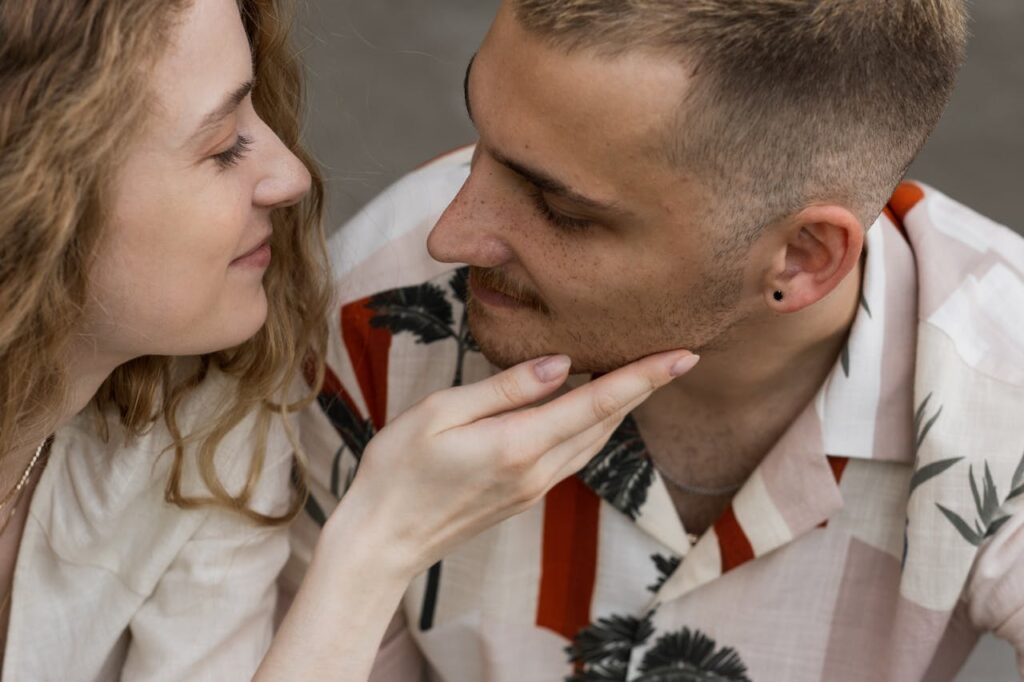Discover comprehensive information for all aspects of sexual health and find resources and guidance to empower your sexual well-being.
The underlying cause as well as the severity of pain determine the varied treatment approaches…
Discover comprehensive information for all aspects of sexual health and find resources and guidance to empower your sexual well-being.
The underlying cause as well as the severity of pain determine the varied treatment approaches…
The pelvic floor muscles are the unsung heroes of our body’s core, providing support to…
Erectile dysfunction (ED) is a common condition affecting men, often characterized by the inability to…
Achieving and maintaining a strong penile erection is a common concern for many men. It…
Erectile dysfunction (ED) is a condition that many men face at some point in their…
Prostate health is a critical concern for men, especially as they age. The prostate gland…
Commitment issues can often manifest in romantic relationships, work, and other personal or professional spheres.…
Attraction often communicates itself through non-verbal cues, known as body language.
If you find these fundamental attraction questions challenging, you are not alone.
Is she attracted to you?
Does he like you?
Why didn’t they call?
Body language equips you with the tools to determine where you stand. By understanding these signals, you can identify when someone is interested in you.
Table of Contents
ToggleTo understand contemporary nonverbal cues of attraction, examining the origins of our body language is insightful. Our Stone Age ancestors employed the same body language that we utilize today.
The following are the messages we aim to convey to potential mates through our body language, along with what is considered attractive:
I’m open
I am harmless
I’m interested
I am friendly
I’m fertile

Common signs that someone is attracted to you include:
One of the most significant indicators of attraction is prolonged eye contact. When someone is attracted to you, they are likely to make frequent and sustained eye contact. This non-verbal cue suggests interest and attentiveness.
Facial expressions can reveal a lot about someone’s feelings. When a person is attracted to you, their facial expressions often become more animated and expressive.
People tend to reduce the physical distance between themselves and those they find attractive. This can be a clear sign of interest.
Touch is a powerful form of non-verbal communication. Subtle touches can signal attraction and a desire to connect more intimately.
Gestures and posture can also provide clues about someone’s feelings of attraction.
When someone is attracted to you, they might display signs of nervousness or engage in preening behaviors to make themselves more appealing.
Changes in voice pitch and tone can also signify attraction. People often alter their vocal characteristics when speaking to someone they find attractive.
When we choose someone as a potential mate, our body automatically undergoes physical changes to attract them. For instance, our cheeks flush, appearing excited. Additionally, our lips swell, suggesting increased fertility, and we release pheromones to attract the other person. Moreover, from a body language perspective, we can consciously do a few things to attract a potential mate.
Leaning toward someone is a nonverbal way of expressing engagement. This technique is particularly effective in a group setting when you’re interested in a specific person. By leaning toward them, you subconsciously draw them closer, indicating your interest.
Tilting your head signifies interest and attentiveness. When engaged in a conversation, convey your openness and interest by tilting your head and maintaining eye contact. Avoid looking over their head or around the room, as this signals a lack of interest and sensitivity.
Related: Body Language: What Do Crossed Arms Actually Mean?
Recognizing body language signs of attraction helps you understand someone’s feelings towards you. By paying attention to eye contact, facial expressions, physical proximity, touch, gestures, nervousness, and voice modulation, you gain insights into their level of interest. Understanding these non-verbal cues enhances your social interactions and helps you respond appropriately to others’ feelings.
Dr. Nishtha, a medical doctor holding both an MBBS and an MD in Biochemistry, possesses a profound passion for nutrition and wellness. Her personal journey, marked by significant struggles with physical and mental health, has endowed her with a unique empathy and insight into the challenges countless individuals face. Driven by her own experiences, she leverages her background to offer practical, evidence-backed guidance, empowering others on their paths to achieving holistic well-being. Dr. Nishtha truly believes in the interconnectedness of the mind and body. She emphasizes the significance of understanding this connection as a crucial stride toward attaining balance and happiness in life.

